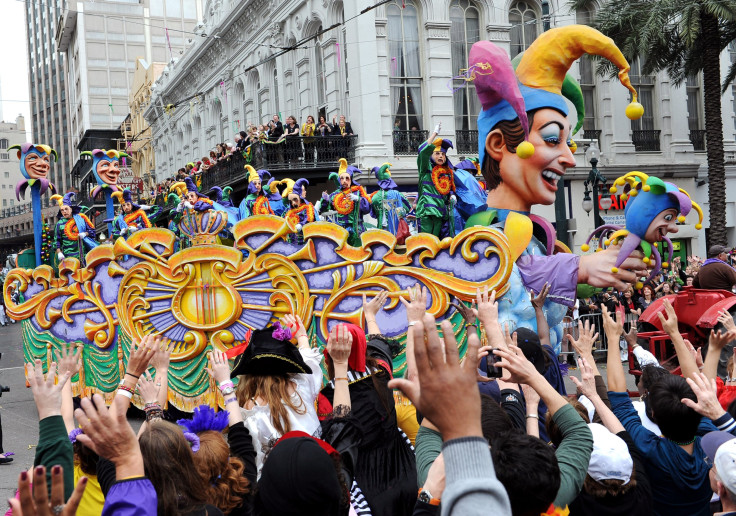Mardi Gras Facts 2016: Interesting Trivia And Traditions To Celebrate Fat Tuesday

If all you know about Mardi Gras is that it's a huge party, you're missing out. The Carnival blowout ending on Fat Tuesday is a cultural celebration with a lot of history. Do the street festival justice by learning and sharing facts about it.
New Orleans held its first Mardi Gras parade in 1837, and 20 years later event organizers added floats. But its origins go all the way back to ancient Rome, where pagans threw festivals to honor deities called Lupercalia and Saturnalia. When the Christians arrived in Rome, they participated and then changed the celebrations to be more of an indulgent feast — a chance to party before starting their disciplined Lenten period, according to the History Channel. It was termed carnevale, which translates to "a goodbye to meat," as participants ate well before fasting.
Today, Mardi Gras is a giant party. It's even a state holiday in Louisiana, where roughly 1 million tourists flock every year to eat King Cake and collect beads in purple, for justice; gold, for power; and green, for faith.
Here are 11 other facts about Mardi Gras, mostly collected from NewOrleansOnline.com, CNN and MardiGrasNewOrleans.com:
- Next year, it falls on Feb. 28. But, as the New Orleans event organizers note online, Mardi Gras "is a whole season — not just one day."
- "Mardi Gras" is French for Fat Tuesday.
- Fat Tuesday is also known as Shrove Tuesday, a term that has its roots in the word "shrive," meaning "to absolve someone of their sins."
- New Orleans is the most popular place to celebrate in the United States, but revelers also gather in Mobile, Alabama.
- Lent starts on Ash Wednesday, which is always 46 days before Easter. Mardi Gras is always the day before.
- Germany, Trinidad and Italy also host big festivals for the holiday.
- In England, it's often called Pancake Tuesday, so named because it was a chance for people to use up their flour, sugar and eggs before Lent.
- Partiers started wearing Mardi Gras masks to protect their identities while they celebrate. Today, people who ride on floats have to wear masks under law.
- Various krewes put on parades for Mardi Gras. The oldest in New Orleans is the Krewe of Rex, which has been active since 1872.
- Singer Harry Connick, Jr. helped found the Krewe of Orpheus in 1993. Guests in the parade since have included Whoopi Goldberg and Sandra Bullock.
- More than 500,000 king cakes are sold every year in New Orleans. The circular cakes are often colored yellow, purple and green and usually include a plastic baby figurine baked inside. It's lucky to find the baby.
© Copyright IBTimes 2024. All rights reserved.






















